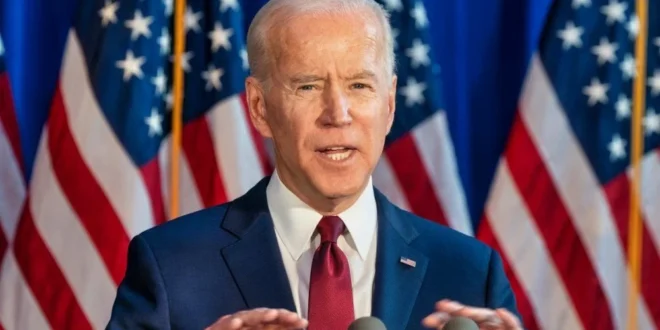America’s national debt is too high. The deficit is too big. Economic growth is too slow. Those are the symptoms. The problem—it is worth repeating—is spending. The problem is spending. The problem is spending.
The debt is too high. The deficit is too big. Economic growth is too slow.
Those are the symptoms. The problem—it is worth repeating—is spending. The problem is spending. The problem is spending.
The national debt recently surpassed $34 trillion. American taxpayers also face unfunded liabilities—federal government commitments to spend beyond expected revenues for programs–such as Medicare and Social Security, of about $150 trillion.
At the end of World War II, the U.S. debt was 119.8 percent of GDP. Today, the debt is 124 percent of GDP and is projected to climb to 257 percent by 2043.
Federal outlays are about 24 percent of GDP but are expected to increase continually to at least 29 percent in twenty years.
Net interest payments on the national debt alone are now about 15 percent of the total budget, the highest share since 2001, and will likely continue to climb. These net interest payments are now about 3.6 percent of GDP, the highest share since 1999, and will likely increase to 6.2 percent of GDP in 20 years.
This trend of spending is unsustainable. But when and how will it end? Other nations have inflated away their debt or defaulted on it.
That has not worked well.
Step one: Economic Growth
The debt after World War II in 1946 was 119.8 percent of the economy. By 1981, it was down to 31 percent of GDP even though the budget was only balanced or in surplus for eight of 35 years.
How? There was some spending restraint, and the economy grew faster than borrowing. In short, less spending and more economic growth.
In the last three years of the Clinton administration, the federal budget was in surplus, along with the first year of the George W. Bush administration. However, the gross federal debt continued to increase as they exchanged debt with different maturities. Still, the debt held by the public did decrease by about $430 billion from 1998 to 2000 and by $128 billion in 2001.
How? President Clinton and the Democrat Congress had plans to spend every dollar of the 1993 tax hike plus $200 billion, the amount they felt was politically acceptable. Reagan had run such deficits. When Republicans captured the House and Senate in 1994, they refused to spend as Clinton wanted. The capital gains tax was cut in 1997 from 28 percent to 20 percent, and the economy enjoyed a growth spurt.
Slower spending and more growth gave America four years of surpluses.
Can we do this again? Can we both increase the growth rate of the economy and slow the growth rate of federal spending?
We have to.
Step Two: Reduce Spending as a Percentage of the Economy
About 70 percent of the federal budget is mandatory outlays, such as Social Security, Medicaid, Medicare, Veterans benefits, national defense, and other expenditures. These are considered on autopilot because politicians don’t want to make necessary changes to these and risk not winning reelection.
Unlike in the late 1990s, we cannot significantly cut spending by reducing domestic discretionary and military spending. The Clinton-Gingrich surpluses were made possible in large part by the collapse of the Soviet Union and a decline in military spending from 5 percent to 4 percent of GDP and from reforming safety net programs, which included work requirements for recipients.
But is it possible to restrain “entitlement” spending programs? Is not the challenge that they are viewed, oddly enough, as something voters are “entitled to?”
Here we have good news. We have done this before.
In the Obama years, the U.S. House voted three times to block grant programs such as welfare, food stamps, and federal housing programs to the states and capped their growth. This is what Republicans did during the Clinton years for Medicaid and traditional welfare, Aid to Families with Dependent Children, now known as TANF, Temporary Assistance to Needy Families.
Clinton refused to block grant Medicaid, but after vetoing welfare reform—which would have block granted it to the states—his political guru Dick Morris reportedly told him he had to choose whether to sign the welfare reform bill or lose the presidential election of 1996. He signed. In most states thereafter, welfare spending fell substantially, by even as much as 30 percent, as people went to work and provided for their families.
In the Obama years, the Budget Committee chairman and then-Speaker Paul Ryan led the House of Representatives to pass a budget that block-granted most means-tested welfare programs and capped their spending growth. Those reforms covered Medicaid and welfare programs but not Social Security and Medicare. The Senate passed such a budget once. But Obama would not sign such reforms.
Ryan showed it could be done, and Republicans maintained control of the House and Senate. Such reforms to mandatory programs focused on means-tested programs—not the ones people believe they have paid for (Social Security and Medicare) can be reformed without political backlash.
More recently, in 2017, Republicans passed this reform for Medicaid through the House and came within one vote—John McCain’s thumbs down vote—of passing such a reform that Trump had agreed to sign.
Even a narrow majority for Republicans in the House and Senate (now lacking an embittered John McCain) with a Republican president could enact significant reform through block granting these welfare problems to the states and removing federal mandates so states could experiment with different ways to keep costs down.
At the state level, a number of states are moving their government pensions away from the traditional union-style defined-benefit system that runs up unfunded liabilities. They are moving toward defined-contribution plans—IRA and 401(k) style—that do not create unfunded liabilities.
As they grow in number and size—and in the private sector, most pensions are already 401(k) style defined-contribution plans—the willingness of Americans to shift Social Security and Medicare to similar structures will grow (the idea first floated by George W. Bush remained popular with younger voters even as the Democrats refused to consider the reform in the 2000s.) Chile shifted its social security system to an opt-in program like an IRA. Ninety percent chose to leave the traditional program, and eventually, the government option was phased out. More than thirty other countries have been either privatized or partially privatized since then.
Great Britain has a hybrid system similar to some U.S. state pensions.
Over time, the unfunded liabilities reduce to zero under this approach, and total spending bends down the cost curve.
Simply beginning the block granting of means-tested programs and later starting the longer phase-in to a fully funded individually controlled 401(k) style Social Security and Medicare would make it clear the United States was headed in the direction of fiscal sustainability by reducing pressure on the budget and the economy.
These sorts of reforms would be assisted by the federal government enacting a sustainable budget. This would be a fiscal rule of spending limit similar to the Swiss debt brake or Colorado’s TABOR, whereby federal spending would be capped at no more than the population growth rate plus inflation. Of course, federal spending should be much lower than this rate to correct for past excesses and bloated national debt. However, the spending limit will force Congress to reform mandatory programs and bring down the national debt. Had this spending limit been in place from 2004 to 2023, the federal debt would have increased by $700 billion instead of the actual increase of $20.2 trillion.
Slowing Spending Must be a Priority
As for economic growth, we have seen the strong growth that Reagan’s top individual tax rate reduction from 70 percent to 50 percent and then to 28 percent gave us until Bush, Sr. reversed the progress. And the capital gains tax reduction in 1978, 1981, 1997, and 2003 all led to higher growth rates.
More recently, taking the corporate income tax rate from 35 percent—one of the highest in the developed world—to 21 percent, about average in Europe, saw a jump in the inflation-adjusted median household income by 7.1 percent in 2019 alone.
Lower individual tax rates, capital gains taxes (in the 1920s, 60s, and 80s), and the corporate tax rate 2017 contributed to faster economic growth rates, which have raised growth rates in the past and will again.
Less spending and more economic growth. Good ideas on their own but are now required by the growing debt flowing from years of uncontrolled spending and underperforming economic growth.
 Geostrategic Media Political Commentary, Analysis, Security, Defense
Geostrategic Media Political Commentary, Analysis, Security, Defense





